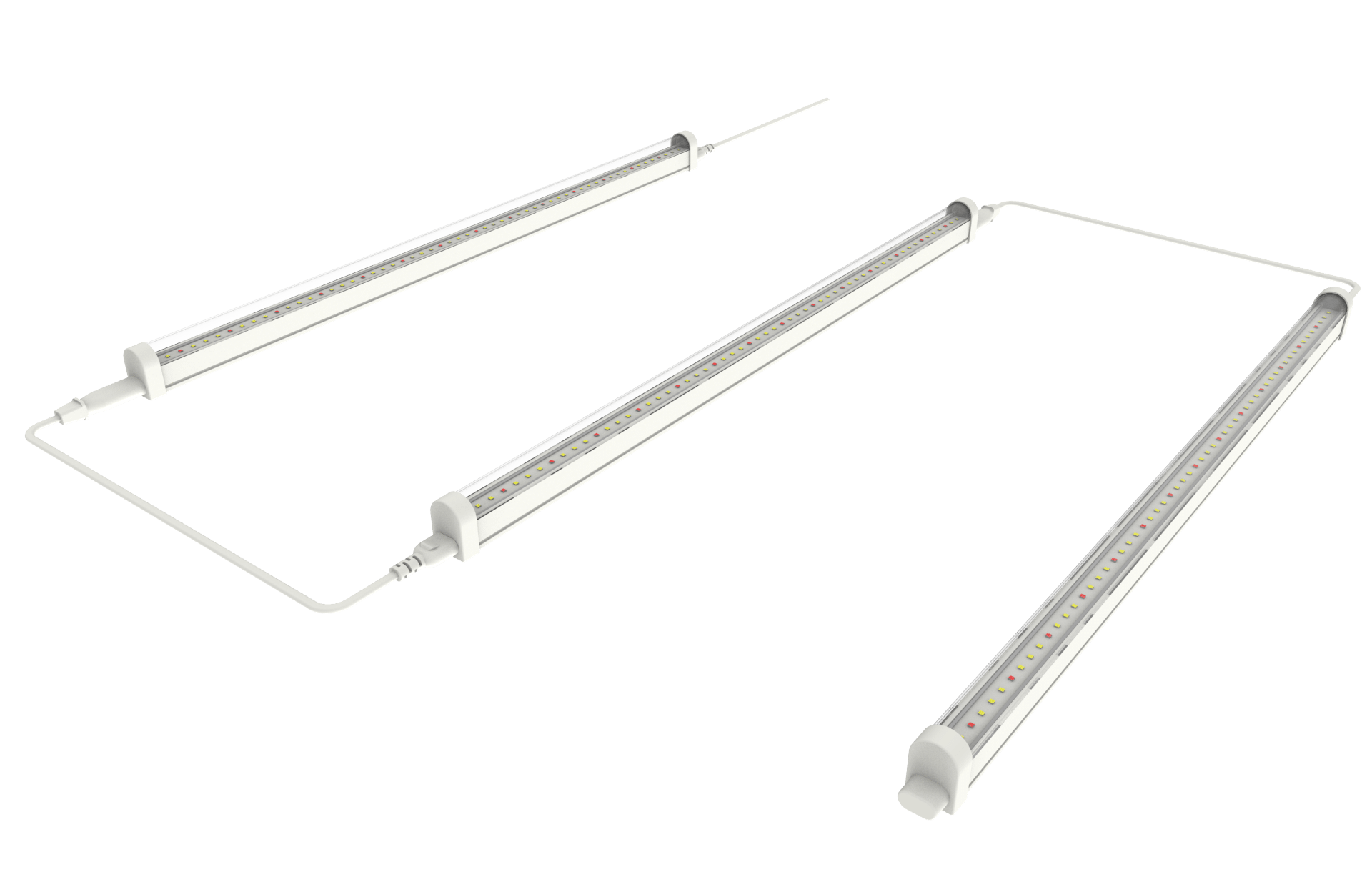Key Takeaways
- Far-red light (700-800nm) significantly impacts photosynthesis and plant morphology.
- It can accelerate flowering in short-day plants by manipulating the Pr/Pfr balance.
- Far-red light promotes shade avoidance, encouraging taller plants with larger leaves.
- Far-red light bars are easy to integrate and can be customized for specific plants and environments.
- This technology holds the potential for optimizing plant growth and flowering and even influencing cannabinoid production.
Gone are the days of solely relying on the visible light spectrum for optimal plant growth. A hidden realm of light wavelengths, beyond the vibrant hues we perceive, holds immense potential for cultivators: the fascinating world of far-red light. While nearly invisible, it plays a crucial role in plant physiology, influencing diverse growth processes and unlocking a treasure trove of benefits for growers of all levels.
Unveiling the Far-Red Spectrum: Beyond Photosynthesis
Our eyes perceive the captivating colors of the visible light spectrum, but plants have a wider sensory range, detecting wavelengths beyond the red end. This minimally visible region, known as far-red light (700-800nm, peaking around 730nm for plant impacts), plays a surprisingly intricate role in plant life.
Far-red light is often mislabeled as infrared (IR), which is over 780nm and primarily associated with heat. Most LED discussions about IR actually refer to far-red light, typically created by 730nm LEDs to fill the 700-750nm region, heavily absorbed by activated phytochrome.
Far-red light contributes to photosynthesis more strongly than originally theorized, but is unique in its interaction with a specific photoreceptor called phytochrome, triggering various responses depending on its presence or absence. Imagine phytochrome as an orchestra conductor, with far-red light playing the role of a specific instrument, directing the plant’s internal symphony.
A Symphony of Photoreceptors: How Plants “See” Light
Plants perceive light through an orchestra of tiny light-sensitive molecules called photoreceptors. Among these, phytochrome plays a starring role, existing in two forms: Pr (a ground state activated by red light) and Pfr (an excited state deactivated by far-red light). In daylength-sensitive plants like cannabis, the balance between Pr and Pfr, and the duration spent in either state, dictates whether the plant remains in its vegetative stage or transitions to flowering.
Accelerating the “Sleep” Signal for Earlier Flowering
As darkness falls, Pfr naturally reverts back to Pr in a gradual process. This shift triggers the plant’s “rest” phase, ultimately leading to flower initiation if the dark period is long enough. The Stratum Far Red Bar, designed to harness the power of 730nm far-red light, specifically targets and accelerates this Pfr to Pr conversion.
By introducing a short period of far-red light during the last 30-60 minutes of the light cycle and the first 30 minutes of darkness, you mimic the natural dusk transition. This amplified signal translates to earlier and more robust flowering, without necessarily requiring as many hours of continual darkness. This can result in faster harvests and potentially higher yields.
Shade Avoidance: Promoting Stronger Plants with Far-Red Light
Picture sunlight filtering through dense foliage, creating shaded areas for your plants. In response, far-red light triggers a fascinating adaptation called shade avoidance. The plants stretch taller and develop larger leaves to capture more light for photosynthesis. This response can translate to increased yields and greater overall growth. Additionally, far-red light improves airflow and circulation within the canopy, reducing the risk of mold and diseases.
Manipulating Flowering with Far-Red Light for Short-Day Plants
For short-day plants like cannabis, the duration of darkness plays a critical role in triggering flower initiation. Traditionally, growers rely on precise light cycles to mimic natural dusk and dawn conditions. However, far-red light offers a unique tool to manipulate this process. By introducing far-red light during the dark period, growers can effectively trick the plants into sensing an earlier “dusk,” accelerating the transition to the flowering stage.
Practical Applications of Far-Red Light in Your Grow
Integrating far-red light technology into your grow setup doesn’t require major changes. Dedicated far-red light bars and bulbs offer user-friendly solutions, allowing you to harness the power of this invisible spectrum. Consider incorporating far-red light during specific growth stages:
- Seedlings and young plants: Far-red exposure early in the light cycle encourages beneficial stretching for a fuller canopy, laying the foundation for strong future growth.
- Flowering stage: Introduce far-red light during the last 30-60 minutes of the light cycle and the beginning of the dark period to accelerate the transition to flowering for short-day plants.
Experimentation is Key with Far-Red Light
Every grow environment is unique, and so is the optimal application of far-red light. Experiment with timing, intensity, and duration based on your:
- Plant variety: Different strains may respond differently to far-red light.
- Environment: Factors like temperature, humidity, and existing lighting setup play a role.
- Desired outcomes: Are you aiming for earlier flowering, improved canopy development, or something else?
Monitor and adapt: Far-red light is a tool, not a magic solution. Careful observation and data tracking will help you unlock its full potential.
The Future of Cultivation: Exploring the Potential of Far-Red Light
Far-red light technology is still in its early stages, but its potential is vast and exciting. From optimizing plant morphology and enhancing the onset of flowering to fine-tuning light efficiency and even influencing cannabinoid production, the possibilities are intriguing and require more research to unlock them all.
Read more here.
Image provided by Total Grow Lights



1 Comment